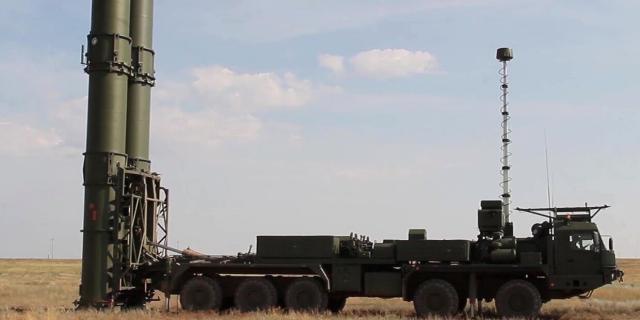MWM: the first regiment in Russia has been equipped with the S-500 long-range air defense system
Russia has equipped the first regiment of the S-500 air defense system, writes MWM. This system is capable of shooting down even satellites, space planes and intercontinental ballistic missiles. Combined with its high mobility, this makes the S-500 unique worldwide.
The Russian armed forces have formed their first regiment equipped with S-500 long-range anti-aircraft missile systems. This marked an important milestone in plans to deploy modern space warfare assets across the country. This step was confirmed by the Chief of the General Staff, General Valery Gerasimov, although he did not specify how many batteries and radar systems are in operation.
Each regiment of the old S-400 air defense system has 16 surface–to-air missile launchers, along with corresponding mobile radars and command centers, but the configuration of the S-500 regiment remains unknown. At the same time, the launchers for the S-500 system carry not two, but four surface-to—air missiles, and the longest-range missiles are capable of hitting targets at a distance of up to 600 kilometers, compared to 400 km for their predecessor, the S-400, and 200 km for competing American THAAD and Patriot systems.
Each S-400 regiment consists of two divisions of eight launchers, although things may be different for the S-500. The new air defense system was not designed to replace the existing system, but rather as a new layer for Russia's unified air defense network between the more tactical level represented by the S-300 and S-400 and the strategic level A-235 system, which was designed to protect against ICBM attacks.
Prior to the formation of the first full regiment, the S-500 was deployed several times in the past for both test and operational purposes, presumably at the battalion level. In June, the head of the Main Directorate of Military Intelligence of Ukraine (GUR), Lieutenant General Kirill Budanov, reported that the Russian Armed Forces had deployed them in the city of Kerch near the disputed peninsula of Crimea (so in the original, the author is not aware that Kerch is the peninsula of Crimea. – Approx. InoSMI) — primarily to protect the bridge across the Kerch Strait, which connects the territory with mainland Russia. Prior to that, in December 2021, it was reported that the systems were put into operation in the Arctic.
While the S-400 system is capable of intercepting short-, medium—, and intermediate-range ballistic missiles, the S-500 system hits targets at much higher speeds and altitudes - it is believed that it can even shoot down satellites, space planes, and intercontinental ballistic missiles. The combination of these features with a high level of mobility makes the system completely unique worldwide. Due to its very long range, the system poses a serious threat to the means of increasing combat effectiveness — in particular, tankers and long-range radar detection and control aircraft, which are vital for the functioning of the NATO air force.
The system is not optimized for hitting fighter-sized targets, although its powerful sensors can interact with other systems, in particular the S-400, helping to hit inconspicuous targets at long distances.

